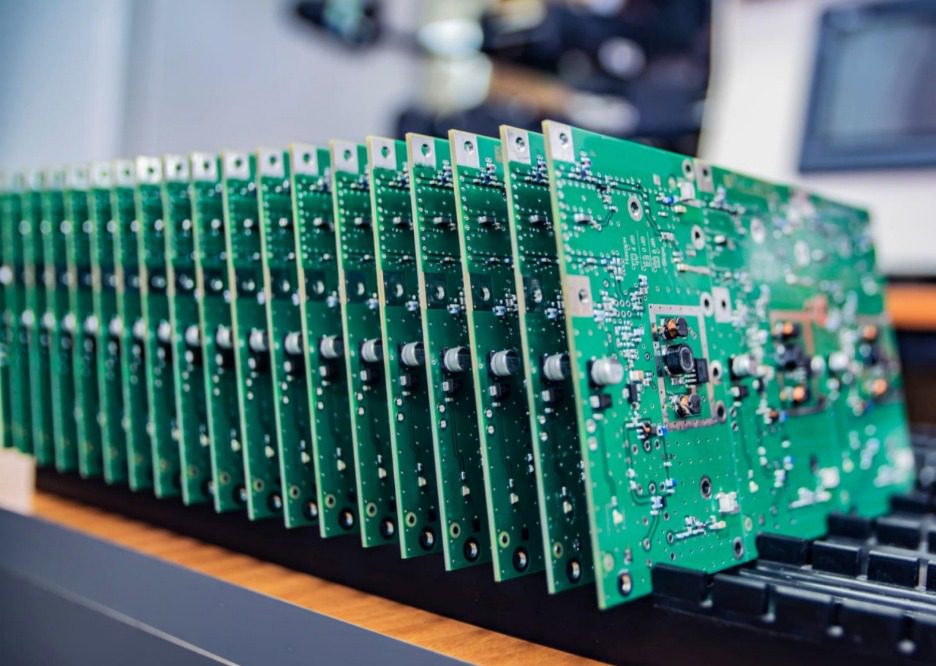Table of Contents
1. Introduction
In the world of electronics, the words PCB (Printed Circuit Board) and PCBA (Printed Circuit Board Assembly) are frequently used. Despite their interconnected nature, these words represent discrete stages in the manufacturing process. This comprehensive analysis aims to elucidate the disparities between PCBs and PCBAs, offering insights into their functions, manufacturing processes, and applications. The primary objective of this article is to scrutinize their unique differences and applications. Through a more profound comprehension of these pivotal components, individuals in the electronics industry can refine the decision making process and optimize their projects to achieve the objectives.
4. PCB: The Foundation of Electronics
4.1.What is PCB?
Printed circuit Board functions as a cornerstone in modern electronic devices. They serve as a crucial structural support for electronic components and facilitate their electrical connections. Its importance extends across a broad spectrum of electronic devices, ranging from elementary devices like electronic watches and calculators to sophisticated systems such as computers, communication devices, and military weaponry. PCB is not functional in its isolated state. However, it starts to function after the meticulous assembly of electronic components onto the board. At this juncture, the complex wiring within the PCB establishes a vital foundation, providing a platform for components and integrated circuits. This, in turn, facilitates essential electrical interconnections among these components, ultimately ensuring the seamless operation of the entire electronic system.
4.2.Structure of a PCB:
A basic printed circuit board consists of the following fundamental elements.
- PCB Substrate
- Provides mechanical support
- Electronic Insulation
- Conductive Layers
- Forms conductive traces on the PCB
- Solder Mask
- Protect copper traces and PCB surfaces
- Prevent soldering in PCB assembly process
- Surface Finish
- Prevents copper pads from oxidation and is better for assembly.
- Protect copper pads from oxidation and pollution in usage
- Silscreen
- Reference of electronic components
5. PCBA: The Integration of Components
5.1.What is PCBA?
PCBA, standing for Printed Circuit Board Assembly, signifies the meticulous procedure of integrating electronic components onto a bare PCB board using advanced assembly technologies. There are two technologies of assembly, those are:
- Surface Mounting Technology (SMT): Especially helpful for tiny, delicate parts like diodes or resistors.
- Through-hole technology (THT): Better to use this technique when there are big components.
Consequently, the term PCBA board refers to a fully assembled circuit board that incorporates integrated electronic components on a bare PCB board. The Printed Circuit Board Assembly (PCBA) marks the subsequent phase in the manufacturing process, where electronic components are affixed and soldered onto a fabricated PCB. This entails populating the bare PCB with diverse components such as resistors, capacitors, integrated circuits, diodes, inductors, transistors, LEDs, transformers, etc . The PCBA process transforms a static PCB into a functional electronic assembly, prepared to execute its designated functions. It differs from PCBs in that, if the bare board is analogous to our body, then the PCBA circuit board resembles the neural network of the human body.
5.2.PCBA Process
The PCBA (printed circuit board assembly) process is a crucial stage in the PCB manufacturing of electronic devices, transforming bare printed circuit boards (PCBAs) into functional electronic assemblies ready for use. The PCBA process involves several key steps, each contributing to the successful assembly of electronic components onto the PCB. Here is an overview of the common four steps.


Fig2: PCBA
6. The Basic Differences between PCB and PCBA
- Functionality:
- A PCB is fundamental equipment for electrical connections but lacks active functionality unless components are mounted.
- On the other hand, PCBA is a functional electronic assembly with active and passive integrated components.
- Manufacturing process:
- PCB fabrication is the initial stage, involving the creation of the bare board with conductive traces.
- PCBA is the subsequent stage, where components are added to transform the PCB into a functional unit.
- Components:
- PCBs consist of the substrate and conductive layers.
- PCBA includes electronic components necessary for the intended functionality.
- Assembly Process:
- PCBs are fabricated through processes such as:
- PCBA involves
- Testing:
- PCBs are tested for continuity and basic functionality during the fabrication process.
- PCBA undergoes functional testing, to ensure that all integrated components operate correctly.
6.1.Summary of comparison
| Parameter | PCB | PCBA | |||||
| Functionality | Lacks active functionality until components are added | Functional electronic assembly with integrated components | |||||
| Composition | Fiberglass substrate, copper traces, pads… | PCB and electronic components | |||||
| Fabrication | Photolithographic copper patterning and etching | Soldering components onto the PCB. | |||||
| Testing | Testing for continuity | Functional test | |||||
| Cost | Less expensive | More expensive and time-consuming | |||||
| Components | Consists of conductive layers and a substrate | Consists of active and passive electronic elements | |||||
| Complexity | Determined by the layout of traces, number of layers, and interconnections | Affected by PCB design, number, and arrangement of components | |||||
Table: comparison of PCB and PCBA
7. Applications
PCB Applications
- Printed Circuit Boards provide an essential component in several electronic devices, offering a foundation for interconnecting components.
- They find widespread application in various domains, including consumer electronics, automotive systems, medical devices, and beyond.
PCBA Applications
- Printed Circuit Board Assembly is utilized in devices where integrated electronic functionality has a crucial role.
- This encompasses applications in aerospace, telecommunications, industrial automation, and advanced electronic systems
In conclusion, the differences between PCBs and PCBAs stem from the roles they play in the production of electronic products. PCBAs elevate PCBs by turning them into a working electronic assembly, while PCBs act as the basis by providing a platform for electrical connections. Acknowledging these differences is crucial for anybody involved in the development, production, or use of electronic systems, as it promotes a thorough comprehension of the many phases involved in bringing electronic devices to reality.

